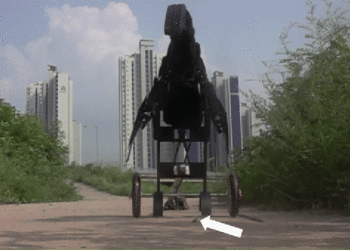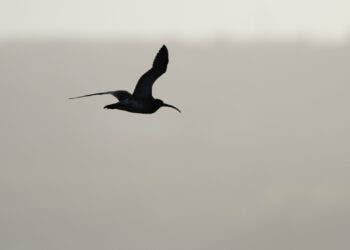
Wild animals aren’t just some dumb beasts. In fact, they’re probably way smarter than most people think. Take elks in Utah, for instance, which move off public lands and onto private lands, where hunting is not allowed and they can stay safe, almost immediately as the hunting season starts. Once the hunting season is over, the elks move back to their natural habitat in the wild. Scientists who documented this behavior are now fascinated, but the local Utah Division of Wildlife Resources is more concerned. They claim elks stepping into private lands throughout the state are disrupting farming operations and infrastructure.
“It’s crazy; on the opening day of the hunt, they move, and on the closing day they move back,” said study senior author and Brigham Young University (BYU) professor Brock McMillan. “It’s almost like they’re thinking, ‘Oh, all these trucks are coming, it’s opening day, better move.”
“They understand death,” added co-author and fellow BYU professor Randy Larsen. “They get it; they’ve figured it out.”
For their study, the researchers captured 445 elks on the Wasatch Front in central Utah and fitted each of them with a GPS collar to track their movements. For two whole years, the elks’ precise location was recorded, showing shifts in their distribution across the park at the beginning of the archery hunting season and during the rifle season. According to the new study, elks have decreased their use of public land by over 30% by the middle of the rifle season. At the conclusion of the season, the researchers detected a shift back to public lands.
Even when opening dates of the hunting season were delayed, the elks responded by delaying their use of private lands accordingly.
It’s not clear how the elks have figured out to time their movements and distribution with the hunting season. The researchers claim the elk have evolved to be wary all of the time, so they’ve probably learned to associate heightened human activity in their area, such as many trucks moving onto the mountain, with imminent danger. But while this clever strategy has helped the animals escape from near-certain doom, hunters are understandably not happy — and nor are local farmers.
“The state had been getting complaints on both sides of the issue with elk migrating to private lands,” Larsen said. “One side says there are not enough elk to hunt — ‘Why are you issuing permits?’ — while private owners are saying ‘The elk are eating us out of house and home!’”
Elk activity is considered very disruptive to farming, so much so that the state is bound by law to cull them and keep their population in check. But these relatively recent shifts in their distribution have helped the elk population in Utah balloon to numbers exceeding those the state is supposed to allow by code.
In order to solve this problem, the state simply issued private-land hunting permits starting with 2016. The GPS-tracked movements of the elks showed that these hunting privileges were successful in altering the elk distribution. In 2017, the elks were found across 42% of public lands, up from 29% in 2015, prior to the introduction of private-land hunting permits.
As a result, Utah has now permanently implemented private-land hunting permits for elks, which now have fewer places to hide and take refuge. That sounds awful for the elks, but the researchers stress that, in this context, humans play an important role as a predator in an ecosystem where others such as wolves are absent. Without such interventions, elk populations would grow out of control, they added.
“Allowing private-land elk hunting in collaboration with private landowners has helped Utah keep these elk populations in balance with their habitat,” said Sergeyev, now a Ph.D. candidate at Caesar Kleberg Wildlife Research Institute at Texas A&M University-Kingsville. “Now there are more elk on public lands when the hunt starts and fewer elk on private lands negatively impacting industries and habitats.”
The study appeared in The Journal of Wildlife Management.






